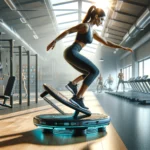As we get older, we tend to get a lot more body aches and we aren’t as flexible as when we were younger. More and more people are turning to inversion therapy for some relief, and the sales of inversion tables are increasing.But people still have a lot of questions about what is an inversion table. Today, we have some of the answers you’re looking for.
An inversion table is a gadget that allows you to hang upside down easily and safely. That is the essence of what an inversion is.
Your feet are strapped to a secure place while you lie back on some sort of table. You can then access the control so that you can slowly invert at an angle you want.
The table is also usually covered by padding so you’re more comfortable. After a time, you can then use the control to get you right side up safely.
This sort of table allows you to get inversion therapy. So of course, this leads us to the next question:
What is inversion therapy?
Inversion therapy is a form of treatment that operates under the principle that the constant gravitational pull when we’re right side up all the time causes problems for the disks, joints, and ligaments. So when you’re inverted, that pressure is reversed which can help with the compression of your disks.
This kind of position also helps promote good circulation to your spinal disks, joints, and ligaments. Since the compression of these body parts is causing you pain, relaxing the pressure can then alleviate the pain.
How safe are inversion tables?
Since the 1980s, there have been various concerns in the media regarding the safety of using inversion tables. But the truth of the matter is that on the whole the use of inversion tables is quite safe.
At one point in the 1980s, a study was published that there may be some concern about the use of full inversion for people with a history of stroke, cardiovascular disease, and hypertension. The study recommended that the elderly should be cautious about the use of the device, especially those who were more at risk for cardiovascular problems.
The media, which tend to prefer attention-getting headlines rather than actual facts, then began putting out headlines saying that inversion tables caused strokes.
Dr. Goldman, who headed the original study, then clarified that cardiovascular accidents were actually more likely when standing right side up, and that the risk of stroke during inversion therapy was greatly exaggerated. There were no reports at all of cardiovascular problems and strokes with inversion therapy.
But what about the discomfort you feel when you’re inverted? Shouldn’t that be a sign that it’s not good for you?
Actually, inversion is a bit like exercising or jogging. You don’t really want to go full blast right away.
You have to acclimatize yourself with the feeling of being inverted. Beginners are advised to start with a mild angle at first of about 20 to 30 degrees beyond the horizontal, instead of doing a full inversion right away.
Also, you should only use it for a short time at first, for just a minute or two. Once you feel uncomfortable, you can then slowly get back to the right side up position.
Eventually, you will get used to the sensation. Most people go for 5 to 15 minutes, about once or twice a day.
What about the danger of falling? Yes there’s that risk, but then again that depends on the inversion table you buy.
Which inversion table is best for you?
If you want to know how to choose an inversion table that’s perfect for your needs, take note of the following factors:
Can it accommodate your weight? Most of the good quality inversion tables should be able to bear your weight, as most of them can handle up to 300 pounds. However, some can handle up to 350 pounds, while others can only go for 250 pounds.
Can it accommodate your height? Again, for most people this shouldn’t be a problem, since it should be able to handle the height of most people. Some can handle a height of up to 6 inch 6 feet while others can even handle 6 inch 8 feet. Other tables may also have a minimum height requirement, such as 4 inch 7 feet.
How comfortable is it? Tables have different types of padding on them for comfort. Some of the more comfortable ones use memory foam. There should also be some lumbar support as well, which helps support your lower back. The advertising for the table will mention if this feature is present. You should read the reviews to see what customers have to say about their comfort level when they’re using a particular table.
How secure and comfortable is the ankle support? They may use straps or a ratchet system, and they may also have foam for comfort. For best results, you’re usually required to use shoes and socks when you’re using the table. Again, you may want to read the reviews to check if there are any accounts of broken straps or accidental drops.
How stable is the table? This is also a common concern, since it may seem like any movement can topple the inversion table over. Again, the reviews should give you a warning if this has happened to some users.However, you can also check that the table has non-skid stabilizers at the bottom. A heavy table may also be more stable.
How easy is it to use? You should be able to control the table easily so you can go upside down and right side up in the precise degree you want. What you don’t want to get is a table that won’t let you go right side up whenever you want to. This can be terribly uncomfortable if you live alone.
How easy is it to store away? The table should fold so you can put it in a cabinet somewhere. It also helps if the table is light enough for you to move on your own.
Does it have bonus features? Some tables can even allow you to do some abdominal exercises!
How much does it cost? Obviously the cost will matter. But you shouldn’t go cheap—quality is more important.
Pros and cons of inversion tables
Like everything else, inversion tables come with their own sets of benefits and drawbacks. However, from most accounts it does seem that there’s more good than bad.
- It offers relief from lower back pain.
- It can increase flexibility.
- Some even say that it can reduce tension headaches and improve your mood
However, like any other type of treatment or medication, there’s always the chance that it won’t help you at all. So that means you may waste your money.
It may even worsen your condition, especially if you do it wrong. You have to go slowly, and when you’re returning to the right side up position you have to go slowly too.
It may also not be good for you if you have a spinal injury or if you have some sort of cardiovascular problem. It’s a good idea to consult your doctor first before you use it.
Wrap-Up!
So read the reviews for the various inversion tables, and get the best one you can afford. If you have some back pain, this can provide you with the pain relief you’re hoping for.


